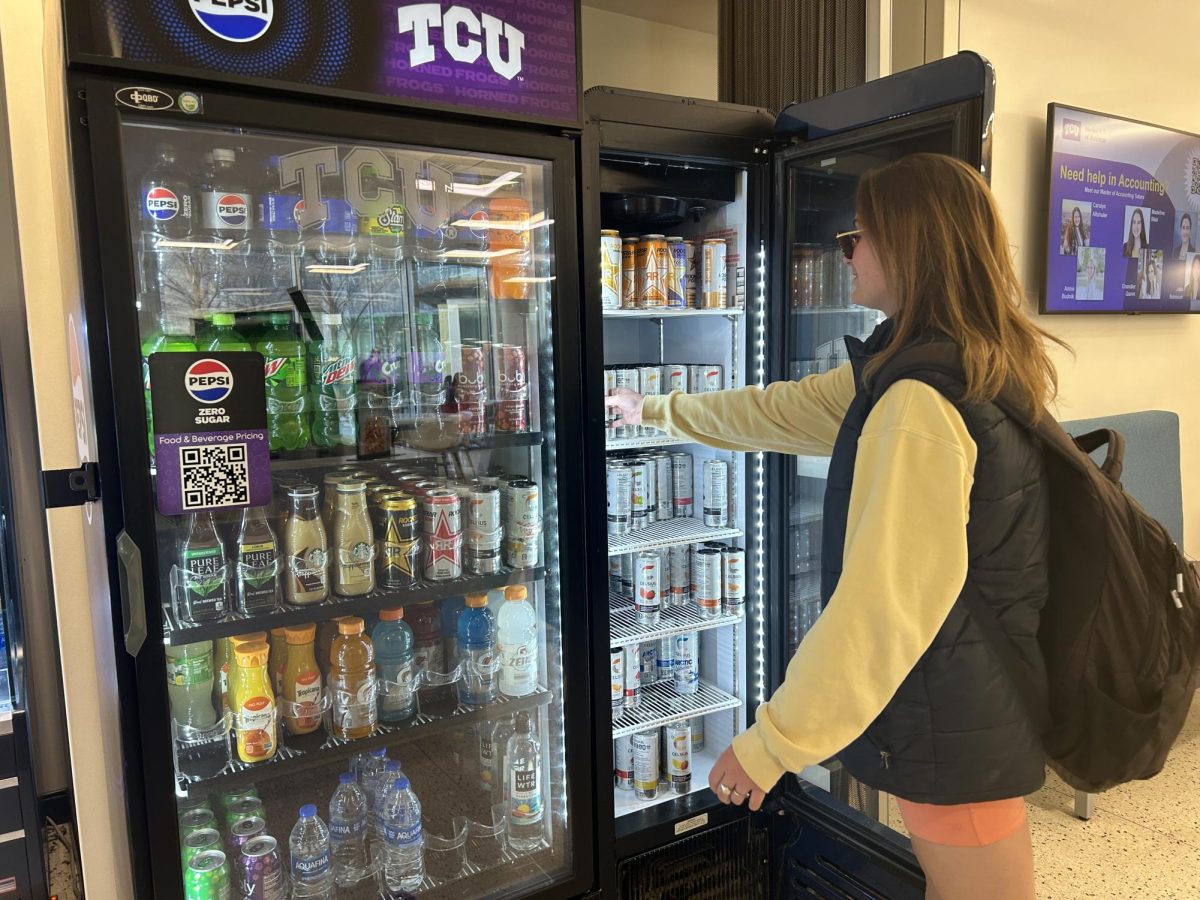The importance of the Campus Commons acting as the central, uniting force to TCU was the main topic of discussion at the housing focus group meeting on Oct. 28.
KSQ Architects, the firm the university uses for its residential buildings, hosted the meeting.
KSQ Communications Manager Monica Roberts and Tom Hier, principal at Biddison Hier, Ltd., led the discussion. Biddison Hier, Ltd. is a company in Washington, D.C. that provides planning and management services to public and private institutions of higher education throughout the United States.
Hier said he conducted focus groups in 2005 before the Campus Commons existed. This is the first time a focus group has been held since the Commons were created, Roberts said.
“We just wanted to tell the story of how the campus has been transformed,” Roberts said. “We think the architecture has played big role in that.”
The pair asked students questions on topics ranging from their opinions of the Campus Commons and the effect it has had the university culture, to improvements that could be made to the area.
“We’re just trying to get a sense of how things have changed,” he said.
Each of the five students sitting around the table in the Davis Room of the Brown Lupton University Union agreed that the Campus Commons gives TCU a sense of home and community.
Senior biology major Cecilia Canelos said she couldn’t imagine TCU without the Campus Commons.
“I don’t know how they used to do the Christmas [tree] lighting or the fall concerts,” she said. “You just walk through it all the time. It has that college feel to it.”
Colton Perry, a junior double major in psychology and communication studies, said the architecture of the Campus Commons helps promote unity between students.
“A lot of the architecture has contributed to that community,” he said. “The grassy area is intentionally there for people to hang out and build a community.”
Sophomore movement science major Eliesa Igler said she agreed with Perry. She said because the Commons is covered in green grass and enclosed by residential buildings, it gives it a comforting and homey feel.
In 2005, the approval of the $100 million plan to construct four residence halls, a university union and a vibrant grassy area in the heart of the campus changed the entire atmosphere of TCU, Love said. Prior to construction, only a parking lot existed where the Commons’ halls and grassy area now rest.
Perry said that many students told him they were torn between TCU and a few other schools, but a split-decision was made once they saw the Commons.
Hier said one of the main goals in creating the Commons was to build a stimulating and intellectual environment for students outside the classroom.
Perry said that residence halls in the Commons don’t have as many “hang out” spots as first-year student dorms, but the halls “nailed it” when it came to study areas.
“They are some of the best study spaces on campus,” Perry said. “They’re secluded. It feels like you’re in a big room like the library in the loud section, but it’s quiet.”
Another goal of the Commons was to create a mini-city with public and private spaces, Hier said.
But students had mixed responses about this.
Senior fashion merchandising and French double major Jackie Canales said she doesn’t see the Commons as mini-city because it only offers Union Grounds and Market Square. She said when she visited friends at the University of Texas at Arlington, the school offered students restaurants, a bar and many other shops.
Perry suggested that if the university improved spaces such as the Wright Media Center and the Carter Technology Center, the Commons could become more city-like. Many students don’t even know their I.D. grants them access to those centers, he said.
Hier suggested renaming the media rooms to “campus living rooms.”
Students said this idea would only work if they contained food or became coffee shops.
“Coffee houses need to happen,” Canelos said.
Not just any coffee – each focus group member recommended Starbucks coffee.
Perry recommended an on-campus bowling alley, while other students suggested more restaurants or bars around campus.
Roberts said KSQ Architects came to TCU to hear from students on what it is like to live on campus today, and she will compare the answers and suggestions to the studies Hier completed in 2005.



